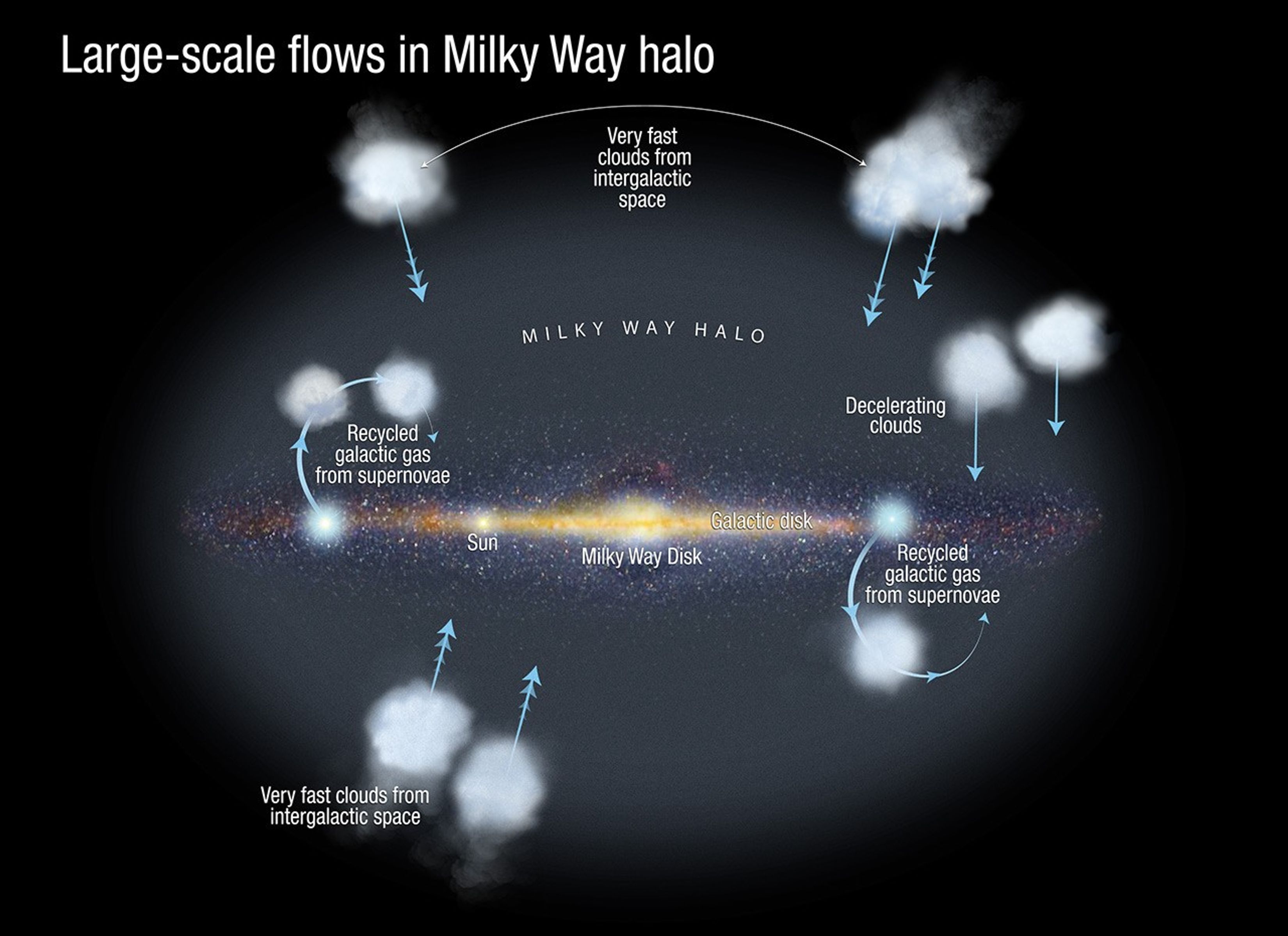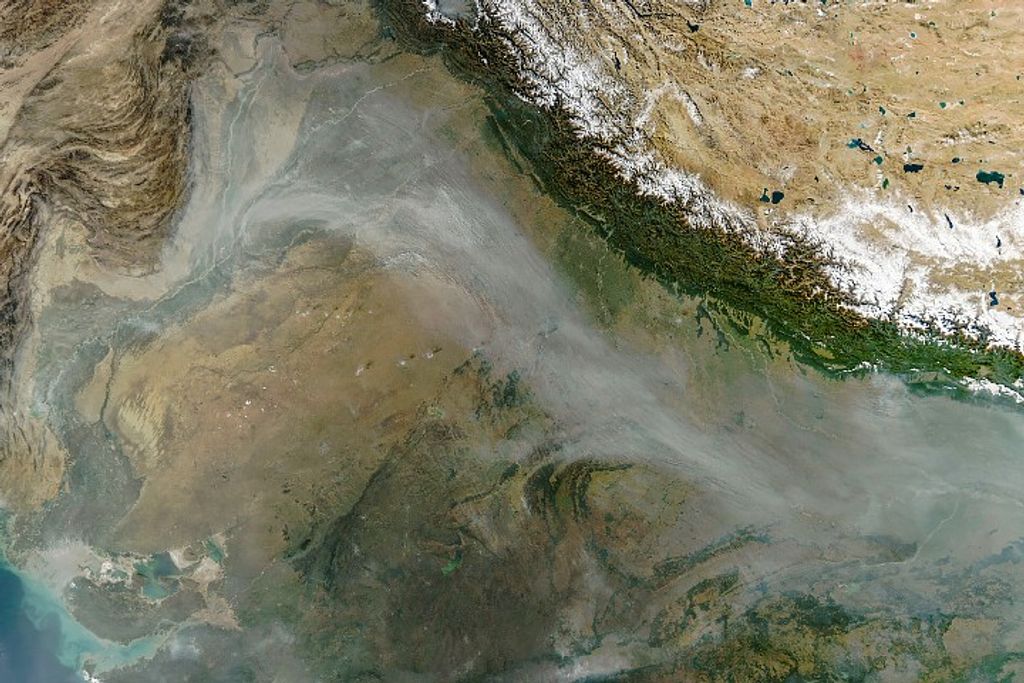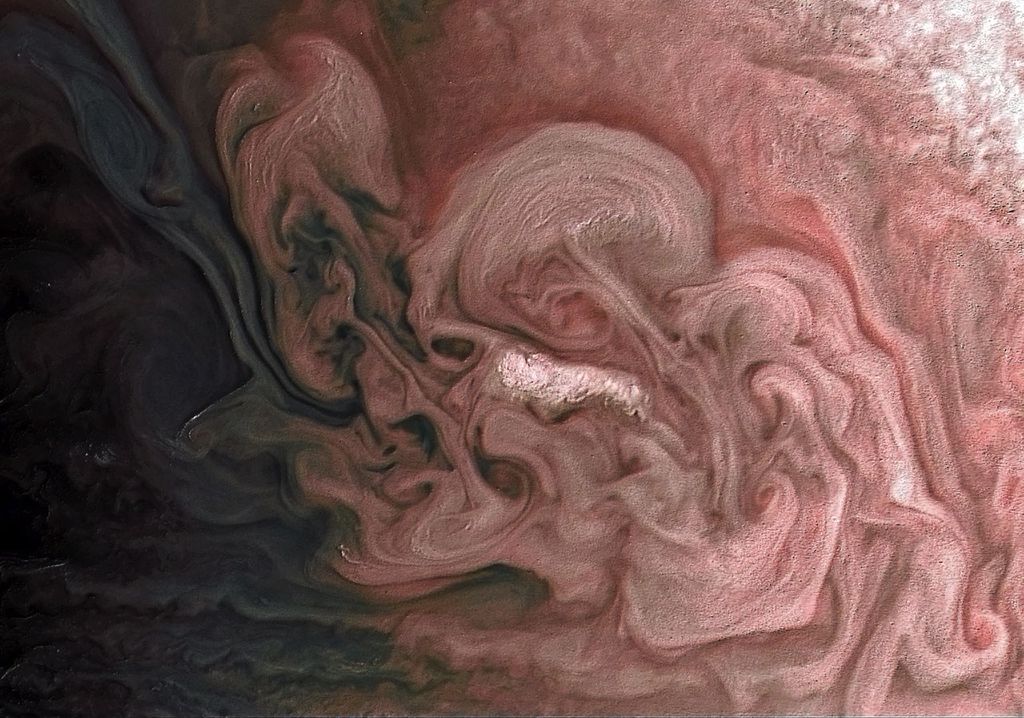The long-term forecast for the Milky Way is cloudy with gaseous rain. A study by Nicolas Lehner and Christopher Howk of the University of Notre Dame concludes that massive clouds of ionized gas are raining down from our galaxy's halo and intergalactic space and will continue to provide fuel for the Milky Way to keep forming stars. Using the Hubble Space Telescope's Cosmic Origins Spectrograph they measured for the first time the distances to huge, fast-moving clouds of ionized gas previously seen covering a large fraction of the sky.
1 min read
Fast Falling Clouds Fuel Milky Way Star Formation
This diagram shows the large-scale flows of gas in the Milky Way halo of faint stars and hot gas. Using the Hubble Space Telescope's Cosmic Origins Spectrograph and Space Telescope Imaging Spectrograph, Nicolas Lehner and Chris Howk at the University of Notre Dame were able to...
Related Images & Videos

Large-Scale Flows in the Milky Way Halo
This diagram shows the large-scale flows of gas in the Milky Way halo of faint stars and hot gas. Using the Hubble Space Telescope's Cosmic Origins Spectrograph and Space Telescope Imaging Spectrograph, Nicolas Lehner and Chris Howk at the University of Notre Dame were able to...
Share
Details
Last Updated
Mar 20, 2025
Contact
Media
Claire Andreoli
NASA’s Goddard Space Flight Center
Greenbelt, Maryland
claire.andreoli@nasa.gov





























